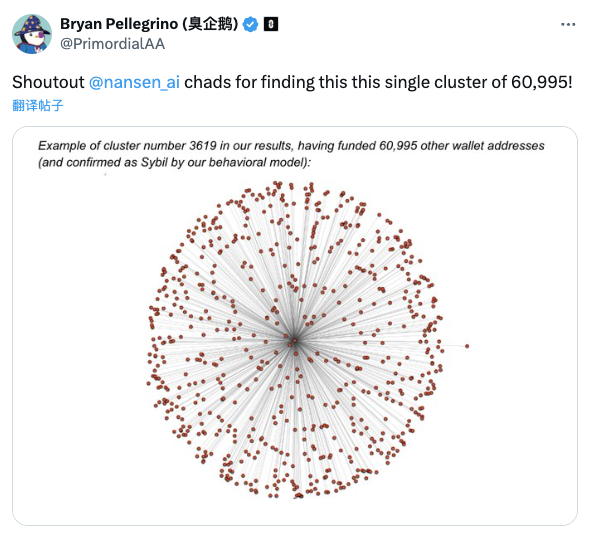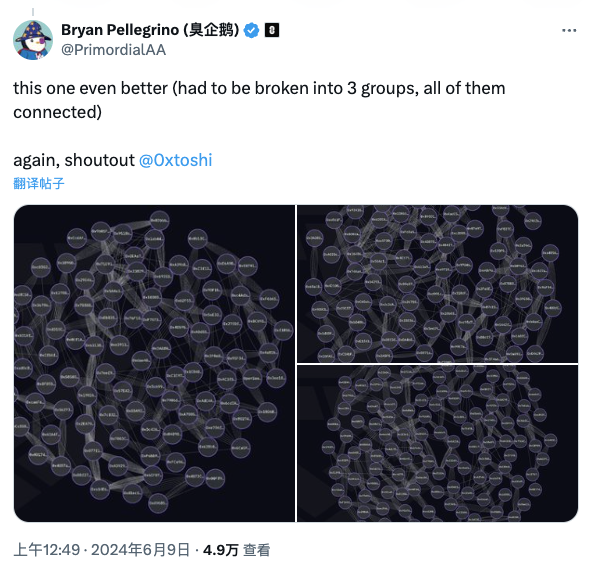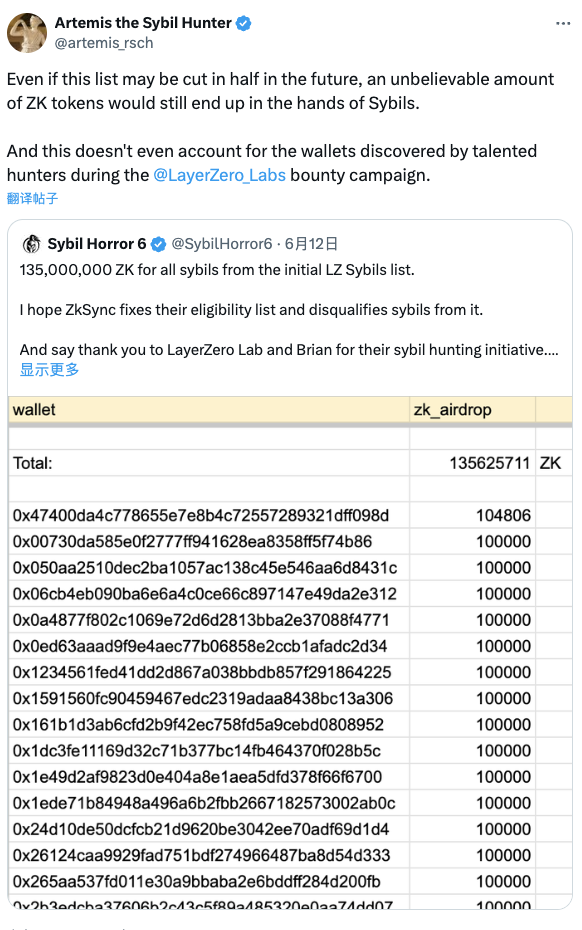Airdrop çılgınlığı ve cadı avı: Blockchain ekosistemi için yeni zorluklar ve fırsatlar
The rapid development of blockchain technology is reshaping our lives and business models. As a promotion and incentive mechanism in the blockchain ecosystem, airdrops have received great attention in recent years. However, airdrops are often accompanied by various challenges and risks, the most notable of which is the Sybil Attack. This article will explore the significance and current status of airdrops, analyze cases such as LayerZero and ZKSync, understand how they cope with challenges, and explore the future development direction of airdrop mechanisms.
Why does the project party conduct airdrops?
There are multiple reasons why blockchain projects choose to conduct airdrops, which establish the core position of airdrops in the blockchain ecosystem:
-
Increase visibility and user engagement: Through airdrops, projects can quickly attract a large number of users, expand the community size, and enhance the projects market influence.
-
Disperse token holdings: Through airdrops, project owners can distribute tokens to more users, avoiding excessive concentration of tokens in the hands of a few large users, thereby increasing the degree of decentralization of the project.
-
Test networks and applications: Through airdrops, project owners can encourage users to test, thereby discovering and fixing potential problems and improving product quality and user experience.
-
Incentivize early supporters: Through airdrops, project owners can reward early supporters and increase user loyalty and engagement.
Challenges of airdrops
As the airdrop mechanism becomes more popular, project owners are also facing more and more challenges and potential risks:
-
Sybil Attack: The attacker abuses the airdrop rewards by creating a large number of fake identities, causing the rewards originally intended to be distributed to real users to be divided up by a large number of fake accounts.
-
Bots: Automated tools and scripts (bots) may be used to manipulate votes and obtain airdrops, thereby undermining fairness.
-
Abuse of supervision mechanisms: Malicious users may exploit loopholes in airdrops to attack or manipulate, harming the healthy development of the project.
LayerZeros Witch Sweep
In terms of dealing with airdrop challenges, LayerZeros Sybil Cleanup has become a high-profile case. They have taken a series of measures to combat Sybil attacks and protect the fairness of airdrops.
On May 4, 2024 , LayerZero Labs launched the Self-Report Sybil Activity program. If the Sybil address self-reports the relevant address on the designated page, it can get 15% of the expected distribution without answering any questions. The deadline is May 17 at 19:59:59.
After the self-reporting period ends, the cleanup operation is divided into two phases. In the first phase , the official will release a list of all identified Sybil users, and those who have been identified but have not self-reported will not be able to receive airdrop allocations; in the second phase , the official will open a bounty, and users can submit detailed reports of Sybil activities. Successful reports will result in the Sybil user not being able to receive airdrop allocations, and the bounty hunter will receive 10% of the expected allocation amount of the Sybil address.
Through these measures, LayerZero successfully marked and screened a large number of potential Sybil addresses, improving the fairness of the airdrop.
Until June 4, 2024 , Bryan Pellegrino tweeted that the witch report was being reviewed and users could submit objections. Although being included in the report list will increase the risk of the relevant address being considered a witch, it does not mean that the address will definitely be judged as a witch. The final witch list has not yet been released, and the current report may be a false positive, which will be screened in the end. The final version of the witch address list will be announced before the end of June.
Then on 8 Haziran 2024 , Bryan Pellegrino tweeted again that Nansen had confirmed 60,995 addresses as Sybil address clusters:
And some screenshots of other studio witch addresses:
The highly anticipated ZKSync airdrop plan
Following LayerZero, ZKSync, a Layer 2 solution based on zero-knowledge proof (ZK-Rollup) scaling technology, has also attracted great attention recently, especially its newly launched airdrop plan. The ZKSync Association will conduct a one-time airdrop of 3.6 billion ZK tokens to early users and adopters next week, and there are 695,232 eligible wallets. The snapshot time is March 24, 2024. Community members can check the airdrop eligibility at https://claim.zknation.io/ and claim the airdrop from next week until January 3, 2025.
This airdrop represents 17.5% of the total supply of ZK tokens. Users will be able to claim their tokens starting on June 24, 2024, and the claim period will last until January 3, 2025.
Users eligible for the ZKSync airdrop
The qualifications and criteria for the ZKSync airdrop distribution are very strict to ensure that only genuine users and contributors are rewarded:
-
Users (89%): Active ZKSync users who transact on ZKSync and meet the activity threshold.
-
Contributors (11%): Individuals, developers, researchers, communities, and companies that contribute to the ZKSync ecosystem and protocol through development, advocacy, or education.
Eligibility is based on a snapshot of ZKSync Era and ZKSync Lite activity as of March 24, 2024 at 00:00 UTC.
How the ZKSync airdrop is distributed
ZKSync distributes airdrops based on users’ trading activity and holdings on ZKSync Era and ZKSync Lite:
-
Eligibility: Each address applying for the airdrop must have at least one credit to indicate its activity on ZKSync.
-
Distribution calculation: The airdrop distribution is calculated based on the users assets in ZKSync Era (including assets in wallets and DeFi) and the holding time of these assets. The upper limit of airdrops for a single address is 100,000 ZK.
-
Multiplier Rewards: Users can also obtain allocation multipliers by holding ZKSync native NFTs, participating in DeFi projects and other activities to reflect their contributions to the ZKSync ecosystem.
Witch Detection
This airdrop places special emphasis on Sybil detection to ensure that rewards go to real users. ZKSync uses on-chain data analysis and behavioral pattern recognition to eliminate Sybil addresses, thereby ensuring the fairness and effectiveness of the distribution.
Interestingly, it did not launch a large-scale witch hunt, but it was widely criticized for this. Among the 690,000 addresses that received airdrops, not only were the airdrop details vague, but there were also multiple witch addresses that had been checked. According to witch hunter Artemis, some insider traders obtained more than 2 million ZK tokens by depositing the same Ethereum funds on the same day, and almost all accounts were marked on LayerZeros witch list.
The future of airdrops
The long-standing tacit understanding of the airdrop rules between the wool party and the project party seems to have caused misunderstandings between the two. Many users believe that airdrops are the labor income they deserve. In the bear market, users work hard and actively, contribute to the handling fees to provide income, and help the project create the illusion of prosperity on the chain, so they should be rewarded. However, these users are more purposeful, and the project party may not fully buy in.
The projects original intention was not to confront the community, but after thousands of studios joined the army of money-making, they needed to be more cautious about the airdrop distribution.
LayerZero and ZKSync’s airdrop plans demonstrate innovative governance measures taken by blockchain projects when facing challenges such as Sybil attacks. These cases provide valuable experience for future airdrop designs.
In the current cryptocurrency ecosystem, various airdrop plans still face huge challenges and opportunities. We hope that more blockchain projects can learn from these successful experiences and design a more fair, transparent and secure airdrop mechanism to contribute to the healthy development of the entire ecosystem. Both project teams and ordinary users should maintain a cautious and innovative attitude in this wave of new technological changes and jointly embrace the infinite possibilities in this sea of stars.
Bu makale internetten alınmıştır: Airdrop craze and witch sweeps: new challenges and opportunities for the blockchain ecosystem
İlgili: Pantera: TON neden en büyük hissemiz?
Orijinal makale: Pantera Capital kurucusu Dan Morehead ve ortağı Ryan Barney tarafından yazılmıştır. Derleyen: Odaily Planet Daily Azuma Editör notu: Bu makale, esas olarak TON analizini alıntılayan Pantera Capitals piyasa yorumları köşesi Blockchain Letter'ın 100. makalesinden alınmıştır. Bir numaralı ağır pozisyon hakkındaki açıklama Pantera Capital kurucusu Dan Morehead'den geliyor. Dan, yakın zamanda Telegram kurucusu Pavel Durov ile öğle yemeği yediğini ve Pantera'nın yakın zamanda Telegrams TON blockchain projesine fon tarihindeki en büyük yatırımı yaptığını belirtti. Bunun dışında, makalenin geri kalanının çoğu Pantera Capital ortağı Ryan Barney tarafından yazılmıştır. Pantera neden TON'u seçti? (Dan Morehead) Kariyerim boyunca harika yatırımlar aradım. Bitcoin'e tutkuluyum ve…










